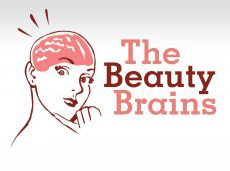BearFoot says…If you are truly looking for 100% organic, no chemicals! beauty products you could actually eat…….Terressentials. You’re kidding yourself if you think these products are organic and free of chemicals. I’m not saying not to use them, just do your research. Rule of thumb is if you can’t pronounce the ingredients, they’re chemicals.
The Beauty Brains respond:
That’s an interesting rule of thumb, BearFoot. So the harder it is to pronounce the more likely it is to be a dangerous synthetic chemical instead of a safe natural ingredient? Okay, then by that logic, here are the top ten most dangerous chemicals used in cosmetics.
Top 10 most dangerous cosmetic ingredients
- Nordihydroguaiaretic acid
- Erythrulose (aka 1,3,4-Trihydroxy-butan-2-one Erythrulose)
- Undecylenoyl phenylalanine
- Ergothioneine
- Galactoarabinan
- Lactoperoxidase
- Asiaticoside
- Phosphatidylcholine
- Fluorphlogopite
- Scleroglucan Schizophyllan
Oh, I’ve included some details on the source and function of these chemicals just on the off chance that such information might be relevant.
1. Nordihydroguaiaretic acid
A potent antioxidant compound found in the creosote bush.
2. Erythrulose (aka 1,3,4-Trihydroxy-butan-2-one Erythrulose)
A clear to pale-yellowish liquid which naturally occurs in red raspberries.
3. Undecylenoyl phenylalanine
Made of natural amino acids for skin whitening.
4. Ergothioneine
Naturally occurring amino acid made in Actinobacteria and filamentous fungi.
5. Galactoarabinan
Polysaccharide extracted from the western larch tree.
6. Lactoperoxidase
An enzyme secreted from mammary, salivary, and other mucosal glands that functions as a natural antibacterial agent. Also derived from milk.
7. Asiaticoside
The main soap-like constituent of C. asiatica, a plant used in Ayurvedic medicine.
8. Phosphatidylcholine
A major component of biological membranes which can be derived from egg yolks or soybeans.
9. Fluorphlogopite
Naturally occurring mineral, a type of mica.
10. Scleroglucan Schizophyllan
Another polysaccharide, this one comes from the fungus Schizophyllum commune.
Hmm, if I didn’t know better I’d almost think that you can’t tell the natural origin of an ingredient just based on the pronounceability of the name.
What do YOU think? Do you think the pronounceability of an ingredient is an indicator of its safety? Leave a comment and share your thoughts with the rest of the Beauty Brains community.
